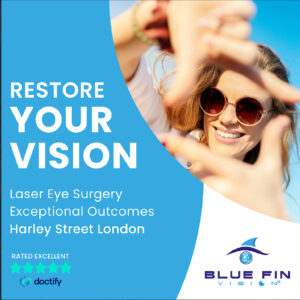Refractive Lens Exchange (RLE) is a transformative procedure in the field of ophthalmology, offering a promising solution for those seeking to improve their vision, especially for individuals whose refractive errors or age-related eye conditions make traditional corrective methods less effective. One of the key advantages of RLE is its ability to address a wide range of visual impairments, including myopia (nearsightedness), hyperopia (farsightedness), astigmatism, and presbyopia, a condition that typically affects people over 40 and causes difficulty focusing on close objects.
The procedure is increasingly being chosen by patients as they age and their vision needs evolve. While LASIK and other laser-based procedures have been popular for younger patients with stable vision, RLE provides an ideal solution for individuals over the age of 40, or those with more significant refractive errors, presbyopia, or cataracts. Unlike LASIK, which reshapes the cornea to correct vision, RLE replaces the eye’s natural lens with an artificial intraocular lens (IOL), making it a more versatile option for those with less-than-ideal corneal conditions or those seeking to avoid the need for glasses later in life.
One of the most significant benefits of RLE is its ability to address both refractive errors and age-related Refractive lens exchange conditions like presbyopia and cataracts in a single procedure. For many people, presbyopia becomes a significant concern as they age, creating the need for reading glasses or bifocals. RLE with multifocal or accommodating IOLs offers a solution by restoring the ability to focus clearly at multiple distances, reducing or even eliminating the need for glasses. This makes RLE a comprehensive solution for patients who not only want to correct their refractive errors but also want to improve their overall quality of life by achieving more natural vision.

Furthermore, RLE has a significant advantage in treating patients who may not be eligible for LASIK due to the thickness or health of their cornea. For individuals with thin corneas, LASIK is not recommended, but RLE can still offer a safe and effective solution for vision correction. The use of IOLs also allows for tailored solutions depending on the patient’s specific needs. Monofocal lenses are designed to provide clear vision at one distance, while multifocal and accommodating lenses are more advanced, enabling clearer vision at various distances—ideal for those with presbyopia.
The procedure itself is relatively straightforward and quick, usually taking only 15 to 30 minutes per eye. Local anesthesia is applied, and patients are awake but relaxed during the procedure. The surgeon makes a small incision in the cornea to remove the natural lens and insert the new IOL. Since RLE is minimally invasive, the recovery period is typically shorter than other surgeries, and most patients experience a noticeable improvement in their vision within a few days to weeks.
However, as with any surgical procedure, RLE does carry some risks, including infection, inflammation, or light sensitivity, though these complications are rare and typically treatable. Some patients may also experience temporary visual disturbances such as glare or halos around lights, but these usually subside as the eye heals. In rare cases, additional corrective procedures may be required to fine-tune the results.
Another important consideration for those considering RLE is the cost. While the procedure tends to be more expensive than LASIK, it is often seen as a long-term investment, especially since RLE addresses both near and distance vision problems in one go. Additionally, the cost of prescription glasses or contact lenses over a lifetime can add up, making RLE a more cost-effective solution in the long term.
In summary, RLE represents a major advancement in vision correction, particularly for those who are no longer ideal candidates for LASIK or who suffer from age-related eye conditions like presbyopia or cataracts. The ability to replace the eye’s natural lens with a tailored IOL offers significant advantages, from improved vision to reduced dependency on corrective eyewear. As with any medical procedure, it’s crucial for individuals to consult with an experienced ophthalmologist to thoroughly discuss their options, risks, and benefits before deciding if RLE is the right solution for them. With continued advancements in lens technology and surgical techniques, RLE remains a powerful tool in the pursuit of better vision and improved quality of life.